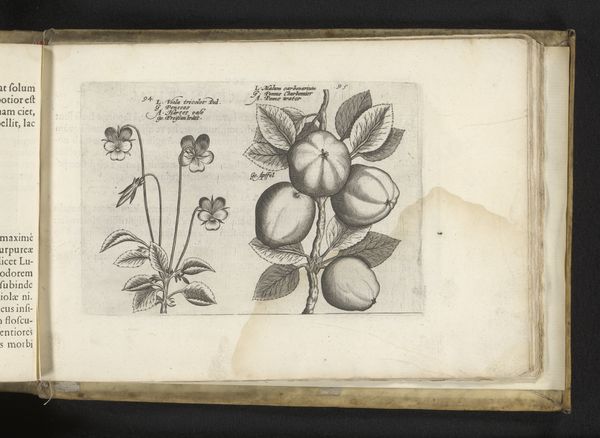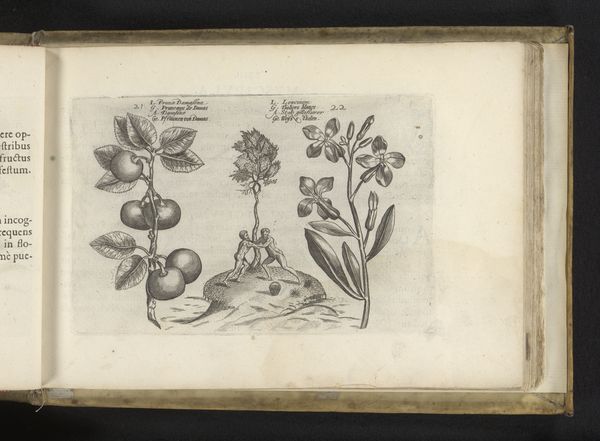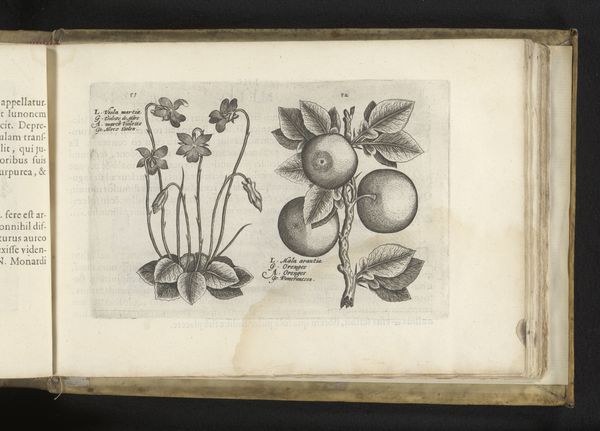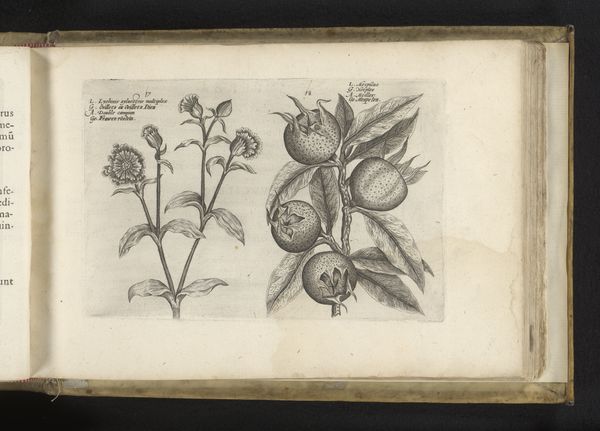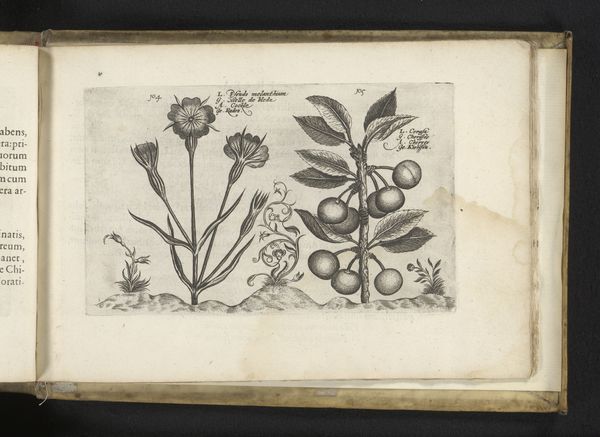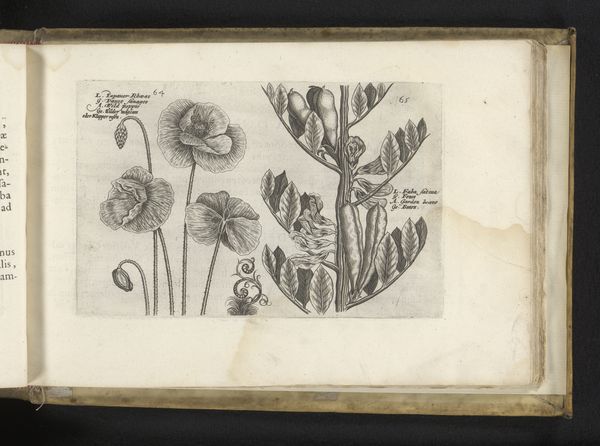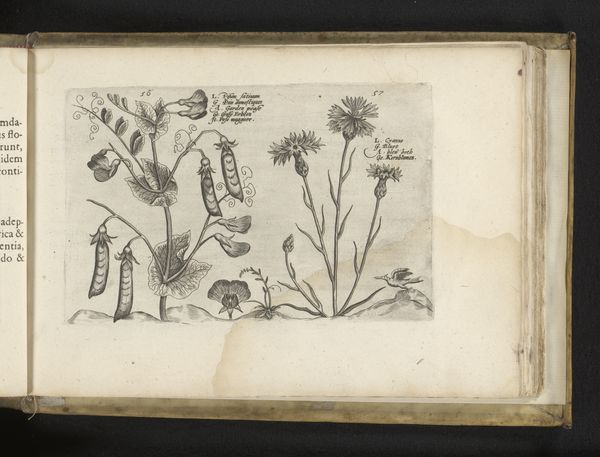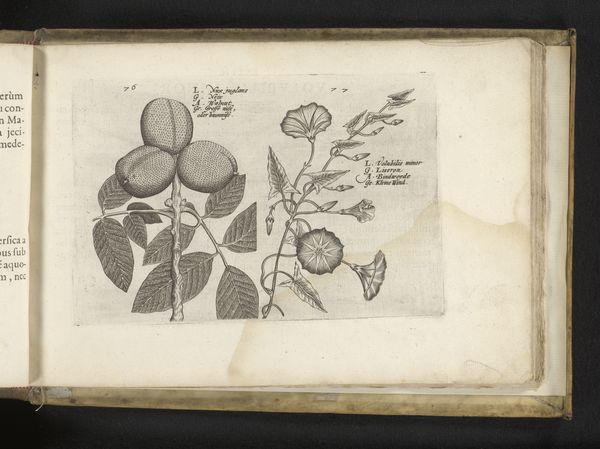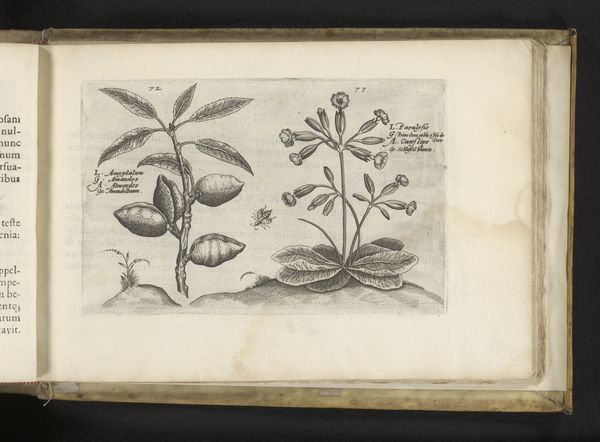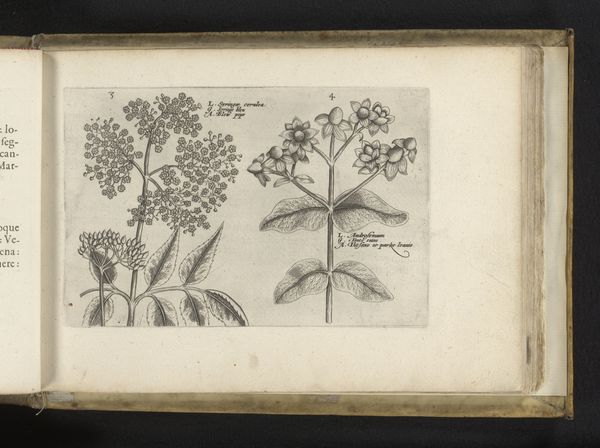
drawing, print, etching, ink
#
drawing
#
ink paper printed
# print
#
etching
#
flower
#
ink
#
coloured pencil
#
northern-renaissance
Dimensions: height 127 mm, width 191 mm
Copyright: Rijks Museum: Open Domain
Curator: Let’s turn our attention to this remarkable print entitled "Lavendel en abrikoos", created by Crispijn van de Passe the Younger in 1617. Immediately, I am struck by the exquisite precision in rendering form. Art Historian: Yes, there’s a subdued austerity to this depiction. It feels less like a celebration of natural beauty and more akin to a botanical record, quite typical of the Northern Renaissance's scientific explorations. Curator: Indeed. Notice the interplay of textures achieved through etching. The artist meticulously captures the lavender’s delicate florets and contrasts it with the apricots’ smoother, round surfaces, utilizing varying densities of line and shading. This strategic handling of ink produces distinct spatial relationships, almost pushing the apricots forward. Art Historian: Placing this within its historical context, one has to remember the era’s burgeoning interest in the natural world fueled by global exploration. Prints such as these served not merely as art, but as accessible resources for scientific study, circulating new knowledge among a wider public. Curator: The formal composition leads the eye first along the verticality of the lavender sprigs, then culminates in the cluster of apricots. Note the almost diagrammatic approach; observe the distinct separation between the two species – there isn't any mingling between them in terms of formal relations. Art Historian: Precisely, which points to how knowledge was being organized at the time, categorized, and disseminated via printed material. Consider the burgeoning book trade and the role prints played within these publications to educate as well as cultivate aristocratic garden culture. Curator: Furthermore, if we apply a semiotic lens, lavender has been associated with purity, and apricots with love and longevity. Are we supposed to decode this combination to convey coded sentiments of the time? Art Historian: Perhaps, but also think about the potential audience. Many cultivated gardens in the 17th century were intended for the elite to experience beauty but were, as well, an assertion of knowledge and social power. Curator: Fascinating. On my part, I became absorbed in appreciating the sheer virtuosity within those seemingly straightforward lines and forms. Art Historian: And I am left thinking about how this image provides insight into how art disseminated both social values and the expanding comprehension of nature in the early modern period.
Comments
No comments
Be the first to comment and join the conversation on the ultimate creative platform.
